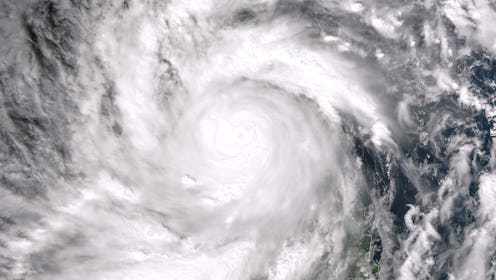News
Devastating Photos Show Destruction In Vanuatu
With a population of just around 270,000 people, the tiny South Pacific island nation of Vanuatu rarely makes headlines — but times like this epitomize the notion that no news is good news. On Saturday, Cyclone Pam slammed into Vanuatu, leaving death and devastation in its wake. Thus far, eight deaths have been confirmed, but numbers are expected to rise as communication lines are re-established in the aftermath of the major storm. Described as "one of the most powerful storms ever to make landfall," Cyclone Pam is now over, but the rebuilding process has just begun, and many fear that some of the damage the storm wrought may be all but irreparable.
With the strength of a Category 5 hurricane, Cyclone Pam accosted the 83 small islands that comprise Vanuatu for a solid 24 hours, leaving the entire nation completely without power. In a statement, Tom Skirrow, Save the Children's Vanuatu country director, said, "The scene here this morning is complete devastation – houses are destroyed, trees are down, roads are blocked and people are wandering the streets looking for help." Sune Gudnitz, head of the U.N.'s Office for the Coordination of Humanitarian Affairs' (OCHA) regional office in the Pacific, added, "A disaster of this magnitude has not been experienced by Vanuatu in recent history – particularly in terms of the reach of the potential damage and the ferocity of the storm."
With winds howling at average speeds of 168 miles per hour, roofs were torn off buildings, trees were uprooted, and much of the landscape of the island nation was completely flattened and then inundated by torrential rainfall. Speaking with NBC News, Jacqueline De Gaillande, the CEO of Vanuatu Red Cross, said:
The situation is a disaster. Most people have lost their homes. All the roofs have gone. People are outside trying to find their belongings on the ground. Lots of trees have fallen on the houses. It's really a big disaster.
Those who live in Port Vila, Vanuatu's capital, were lucky enough to find shelter in schools and churches that survived the storm without too much damage, but it is estimated that 90 percent of the infrastructure even in the capital city were affected, and this proportion is likely higher in rural villages with less stable architecture.
According to aid groups on the ground in Vanuatu, destruction of this magnitude has never before been seen, and there are fears that entire villages have been "literally blown away." One UNICEF worker noted, "It's like a bomb has gone off in the centre of the town," and the Australian Red Cross has stressed, "Humanitarian needs will be enormous. Many people have lost their homes. Shelter, food and water (are) urgent priorities."
Numerous humanitarian and aid organizations, including Save The Children, CARE, Oxfam and the UN, both in Australia and around the world have already pledged their support, in addressing the pressing situation at hand, with thousands displaced and homeless following the day-long storm. The Adventist Development and Relief Agency is one of them, with Mark LeRoux, the organization's Vanuatu country director, telling CNN, "Families are trying to gather as much as they can. Even sturdy houses didn't make it — walls and roofs came down." He added, "Ensuring safe drinking water, sufficient nourishment, especially for mothers and babies, will be a priority."
Time is made ever more of the essence as Vanuatu is expecting to be hit by yet another cyclone later this week — Cyclone Nathan is currently forming over Queensland, Australia, and may make its way over to the neighboring archipelago in the next few days. Vanuatu President Baldwin Lonsdale issued an appeal, saying:
I am speaking with you today with a heart that is so heavy. I do not really know what impact Cyclone Pam had left on Vanuatu ... I stand to appeal on the behalf of the government and people of Vanuatu to the global community to give a lending hand in responding these very current calamities that have struck us.
Images: Twitter
